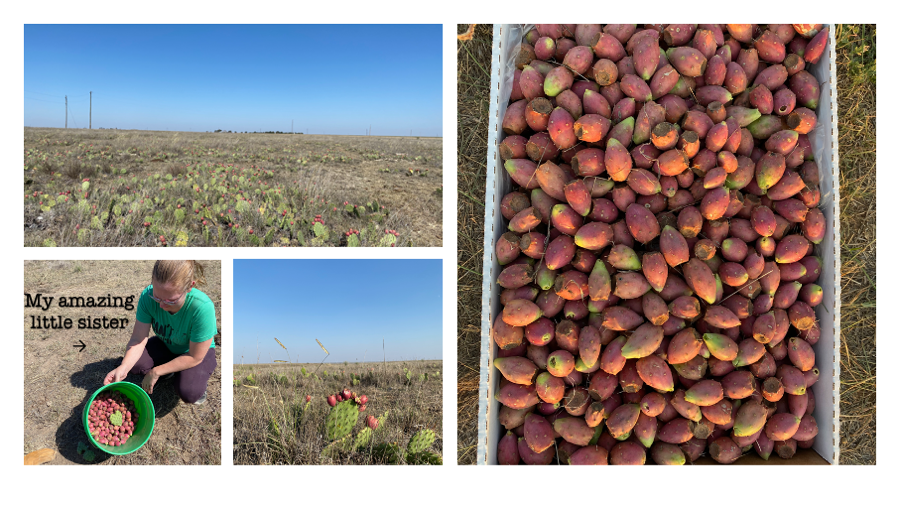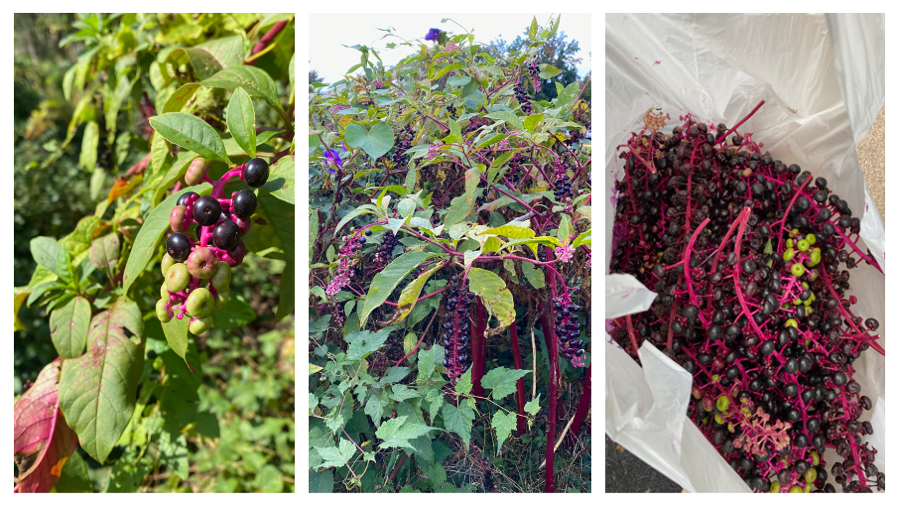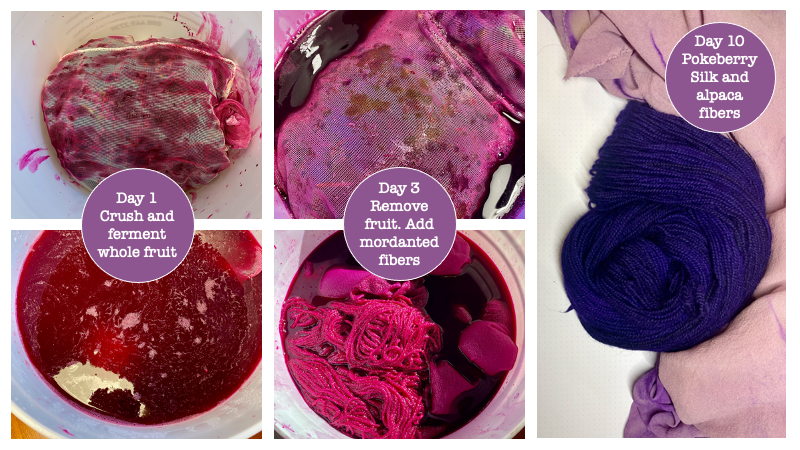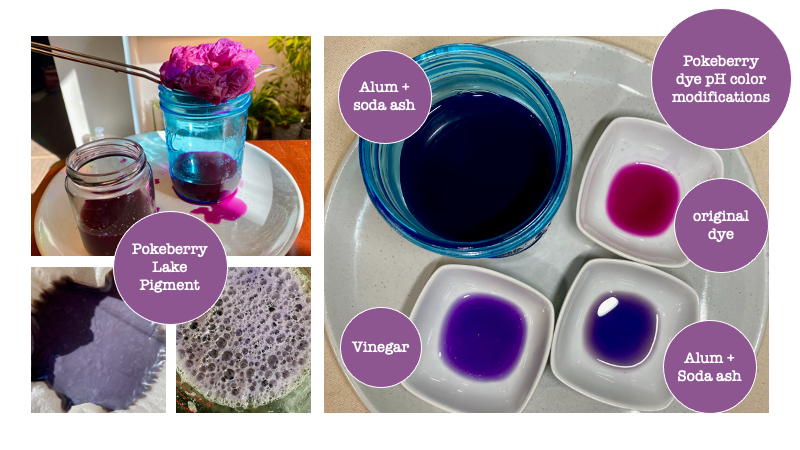4. Biochromes¶
This week I explored natural dyeing of textiles via fermentation. I prepared two dye baths using prickly pear fruit collected from Oklahoma and pokeberries I collected near my house in Virginia.
Research¶
The fruits from some Prickly Pear cactus plants (Opuntia species) are edible and delicious to humans if carefully prepared. About a year ago I collected some prickly pear fruits from a pasture in western Oklahoma and then brought them back to Virginia and put them into my freezer to use later. I am interested in finding different uses of resilient desert plants. I think there is an interesting connection between climate change, desertification, and finding uses for plants that grow natively in an ecosystem rather than relying on heavily irrigated crops.

Navajo Dyeing Tradition¶
A couple months ago, under the guidance of textile artist and collaborator Trisha Gupta, I had attempted to prepare and dye some fabric with prickly pear fruit. We used a hot preparation and the heat ended up destroying the beautiful rosy magenta color I was hoping for. After some research I discovered a guide from the 1940s on Navajo Native Dyes on how to prepare prickly pear dye in the Navajo tradition that uses fermentation to process the fruit rather than heat. According to the document wools and fibers can be scrubbed using “soapweed” and mordanted with juniper ashes or local alum mineral deposits. This guide included the English, Latin, and Navajo words for each plant and I wanted to share here:
The Naming of Natural Mordants and Dyestuff
Navajo: Látil and amole
Latin: Yucca glauca
English: Soapweed YuccaNavajo: gad bididze' doo bilatxahi bileeshch'iih bitxoo’
Latin: Juniperus monosperma
English: Ashes of JuniperNavajo: tsekho'
Chemical: potassium alum or potassium aluminum sulfate
English: Raw AlumNavajo: hwoshntxyeeli binesd'a'
Latin: Opuntia Polyacantha
English: Plains Prickly Pear
Pokeberry Ink and Dye¶

Later in the week I decided to wander around my neighborhood and collect some ‘pokeberries’ that I found growing on the edge of a highway construction site as “weeds”. Pokeberries come from the Pokeweed plant (Phytolacca americana) and though are a popular food for some birds they are somewhat poisonous to humans. I used guidance from a post on The Interior of my Brain blog to prepare the fermented pokeberry dye bath.
Betalain Pigment¶
The pigment from both of these plants that give them their red color is betalain. Betalain is also found in beets, swiss chard, and amaranth. In this class we talked about pigments in the context of textiles, paints, and inks but I found another application of these pigments that goes beyond textiles. The most interesting thing I came across while researching these natural dyes and pigments is that there is research being done using betalain and other plant based pigments to create Dye Sensitized Solar Cells (DSSCs). These plant based solar cells could eventually be part of an alternative to silicon based solar systems.
Process¶
Fermentation takes a little longer... I'll be updating this section more soon!
Scouring and Mordanting¶

Prickly Pear Ferment Dye¶


Pokeberry Ferment Dye¶

Pokeberry Lake Pigment | Color Modifications¶

Results¶

Useful links¶
More interesting links...
- Plants of Navajo Rangelands
- Betalain
- Pokeweed
- Pokeberry Ink Recipe
- Optimizing a Simple Natural Dye Production Method for Dye-Sensitized Solar Cells: Examples for Betalain (Bougainvillea and Beetroot Extracts) and Anthocyanin Dyes
- Eco-friendly and protective natural dye from red prickly pear (Opuntia Lasiacantha Pfeiffer) plant